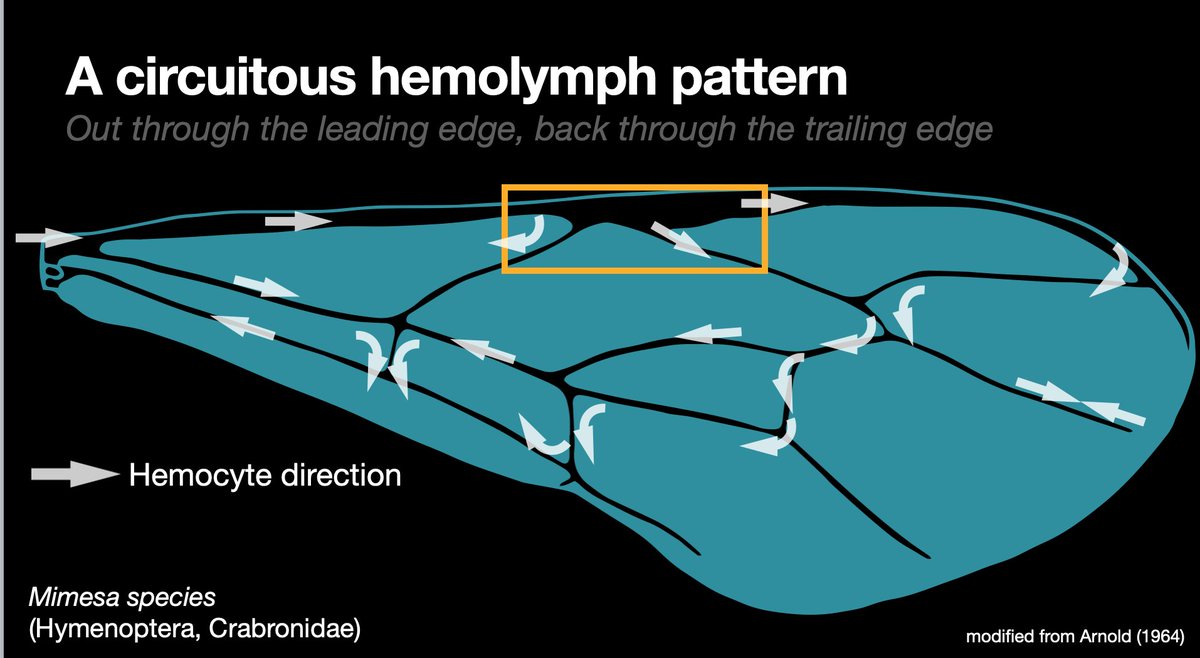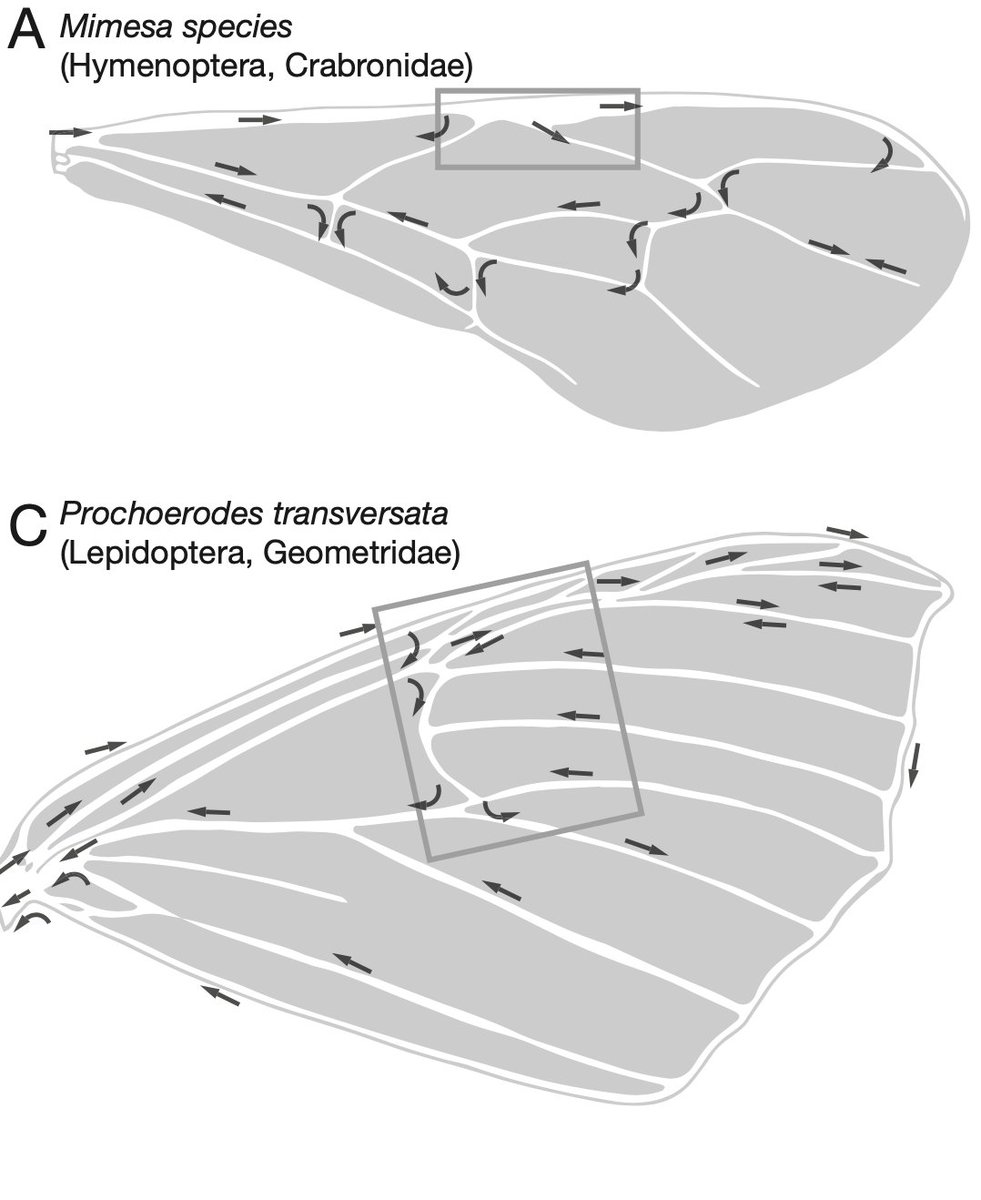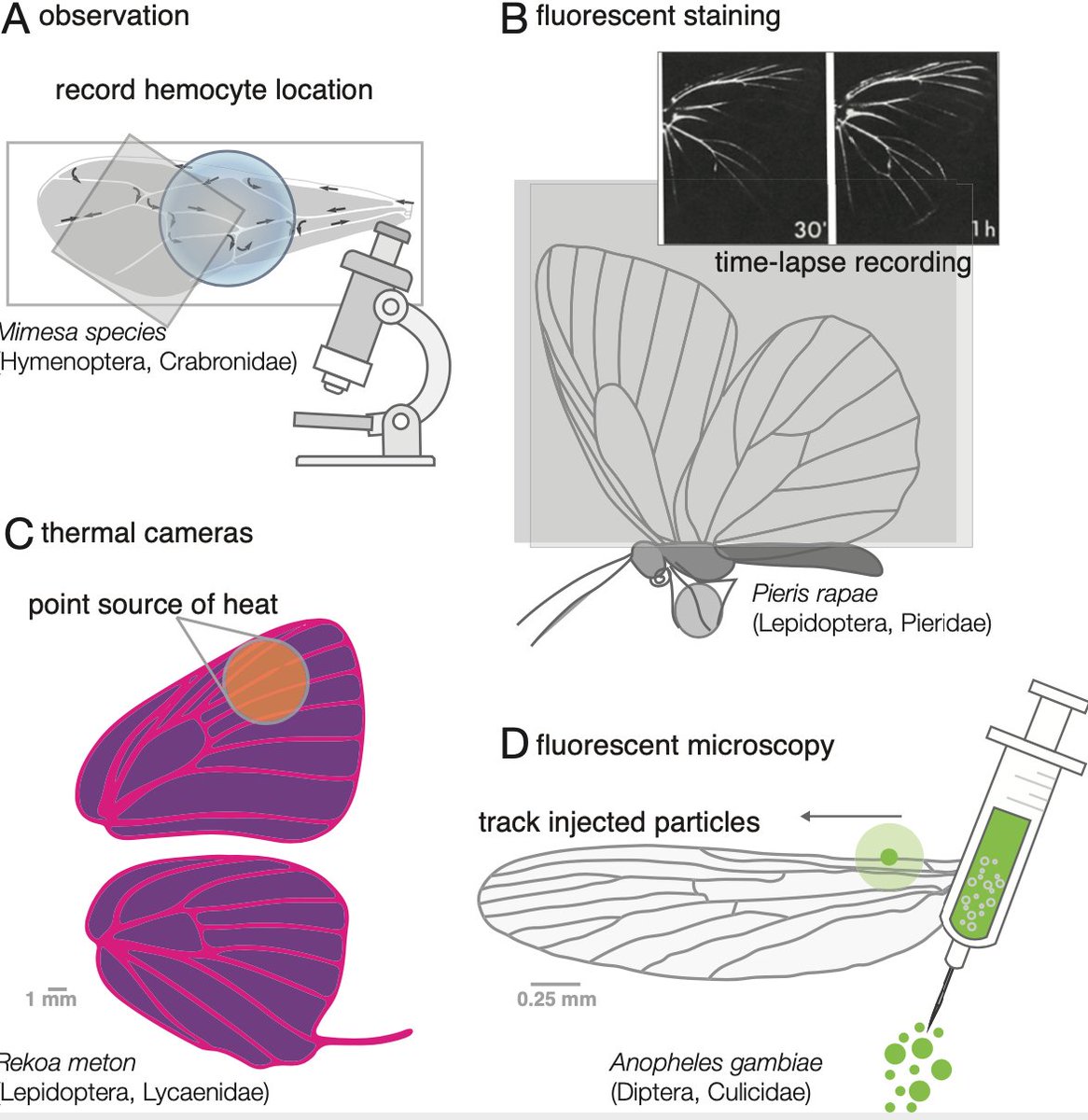My new paper w/Jake Socha ( @snake_flyer) is out!
In "Circulation in insect wings" we discuss why insect wings need active circulation, the current field, and a confusing history
Read here: https://doi.org/10.1093/icb/icaa124
https://doi.org/10.1093/i... href="https://twitter.com/ICB_journal">@ICB_journal @VT_Science @BEAMvt
But let& #39;s get into it now /1
In "Circulation in insect wings" we discuss why insect wings need active circulation, the current field, and a confusing history
Read here: https://doi.org/10.1093/icb/icaa124
But let& #39;s get into it now /1
What is an insect wing? Can we see what& #39;s inside? First, it& #39;s thin membrane + flexible tubes.
If we were to slice a wing, we& #39;d see that veins have active currents of hemolymph (H), nerves (N), and tracheae (T)(respiratory tubes) /2
Pass (2018):
https://doi.org/10.1016/j.asd.2018.05.004">https://doi.org/10.1016/j...
If we were to slice a wing, we& #39;d see that veins have active currents of hemolymph (H), nerves (N), and tracheae (T)(respiratory tubes) /2
Pass (2018):
https://doi.org/10.1016/j.asd.2018.05.004">https://doi.org/10.1016/j...
Why do we see tracheae in the wings?
See those little branchy things? Those spiral-typed tubes?
Insects (dytiscids aka "diving beetles") can use tracheae in the elytra as respiratory organs (C,D). Others (like dragonflies) may have high sensory needs (E) /3
Fig: Pass (2018)
See those little branchy things? Those spiral-typed tubes?
Insects (dytiscids aka "diving beetles") can use tracheae in the elytra as respiratory organs (C,D). Others (like dragonflies) may have high sensory needs (E) /3
Fig: Pass (2018)
For the grand scheme of things, let& #39;s consider an insect& #39;s respiratory system and circulatory system
An insect has a network of tracheae that deliver oxygen directly to tissues
Air goes in and out of spiracles, valved holes along the sides /3
Art: @eleanor_lutz
An insect has a network of tracheae that deliver oxygen directly to tissues
Air goes in and out of spiracles, valved holes along the sides /3
Art: @eleanor_lutz
In contrast, an insect circulatory system is OPEN. No network of vessels, just blood, sloshing around - being pushed around by multiple hearts. YES. More than 1  https://abs.twimg.com/emoji/v2/... draggable="false" alt="💜" title="Violettes Herz" aria-label="Emoji: Violettes Herz">!
https://abs.twimg.com/emoji/v2/... draggable="false" alt="💜" title="Violettes Herz" aria-label="Emoji: Violettes Herz">!
1 long https://abs.twimg.com/emoji/v2/... draggable="false" alt="💜" title="Violettes Herz" aria-label="Emoji: Violettes Herz"> = dorsal vessel
https://abs.twimg.com/emoji/v2/... draggable="false" alt="💜" title="Violettes Herz" aria-label="Emoji: Violettes Herz"> = dorsal vessel
Accessory https://abs.twimg.com/emoji/v2/... draggable="false" alt="💕" title="Zwei Herzen" aria-label="Emoji: Zwei Herzen"> = extra pumps to push/pull blood into antennae, wings, legs, ovipositors /4
https://abs.twimg.com/emoji/v2/... draggable="false" alt="💕" title="Zwei Herzen" aria-label="Emoji: Zwei Herzen"> = extra pumps to push/pull blood into antennae, wings, legs, ovipositors /4
1 long
Accessory
Between 1744 - 1930s, entomologists argued as to whether insects even had blood! Or a circulatory system!
Circulation in wings was established in the 1830s (the Carus Rule), but Leon Dufour (1841) declared no such circulatory system existed /5
Circulation in wings was established in the 1830s (the Carus Rule), but Leon Dufour (1841) declared no such circulatory system existed /5
Fast-forward to the 1960s where John Arnold, using a microscope and a light source, mapped circulation in 100 insect species (14 orders).
We highlight his work, bringing his meticulatous drawings to life. /6
(Figures from the review below, redrawn/modified: @MarySalcedo)
We highlight his work, bringing his meticulatous drawings to life. /6
(Figures from the review below, redrawn/modified: @MarySalcedo)
We discuss experimental techniques over the last 60 years to visualize the active circulation in hemolymph wings -- focusing on microscopy work, fluorescent staining, fluorescent spheres, and thermography. /7
Seminal work in insect appendage circulation belongs to Chintapalli and Hillyer ( @VandyBugs) (2016) who visualized hemolymph circulation in mosquitoes wings
This pioneered work gave me the tools to look at circulation in grasshopper wings /8
More:
doi: 10.1242/jeb.148254
This pioneered work gave me the tools to look at circulation in grasshopper wings /8
More:
doi: 10.1242/jeb.148254
I& #39;ve often said my experiments with grasshoppers look like tiny galaxies. A complex, microfluidic environment...it& #39;s joyful!
You can see my work, featured by the @TheSTEMvillage, which will be coming out soon https://abs.twimg.com/emoji/v2/... draggable="false" alt="🥰" title="Smiling face with 3 hearts" aria-label="Emoji: Smiling face with 3 hearts"> /9 https://youtu.be/bSqFWZ4kcZQ ">https://youtu.be/bSqFWZ4kc...
https://abs.twimg.com/emoji/v2/... draggable="false" alt="🥰" title="Smiling face with 3 hearts" aria-label="Emoji: Smiling face with 3 hearts"> /9 https://youtu.be/bSqFWZ4kcZQ ">https://youtu.be/bSqFWZ4kc...
You can see my work, featured by the @TheSTEMvillage, which will be coming out soon
You might be asking - why wing circulation? Why wings?
#1 Insect wings are robust, but they do break. Breaking = brittle, wings lose hemolymph and flexibility
<5 min, fractured insect cuticle changes properties /10
Dirks and Taylor (2012)
doi: 10.1242/jeb.068221
#1 Insect wings are robust, but they do break. Breaking = brittle, wings lose hemolymph and flexibility
<5 min, fractured insect cuticle changes properties /10
Dirks and Taylor (2012)
doi: 10.1242/jeb.068221
Insects even evolve strategies to deal with potential damage, as with this yellow jacket and the "costal break" - a specialized wing joint that allows wing flexion if hitting a surface. /11
Mountcastle ( @amtcastle) and Combes (2014)
doi: 10.1242/jeb.092916
Mountcastle ( @amtcastle) and Combes (2014)
doi: 10.1242/jeb.092916
Some insects (beetles) use hemolymph to hydraulically open their wings.
This has been studied with pressure sensors and injected fluoroscein (a fluorescent liquid). /12
Sun et al (2014)
https://doi.org/10.3390/ijms15046009">https://doi.org/10.3390/i...
This has been studied with pressure sensors and injected fluoroscein (a fluorescent liquid). /12
Sun et al (2014)
https://doi.org/10.3390/ijms15046009">https://doi.org/10.3390/i...
And some insects have important organs ON their wings, like scent patches, that NEED hemolymph to function. /13
Tsai et al (2020) https://doi.org/10.1038/s41467-020-14408-8">https://doi.org/10.1038/s...
Tsai et al (2020) https://doi.org/10.1038/s41467-020-14408-8">https://doi.org/10.1038/s...
AND! If we are curious about how this affects flapping flight, and whether hemolymph is enough added mass to affect wing inertia -- models point to YES -- it does matter that there& #39;s wing hemolymph. /14
Song et al (2020)
https://doi.org/10.1016/j.compbiomed.2020.103817">https://doi.org/10.1016/j...
Song et al (2020)
https://doi.org/10.1016/j.compbiomed.2020.103817">https://doi.org/10.1016/j...
I hope this sparked an interest in insect wings and why they matter! Stay tuned for more exciting work
My main study animal is the North American grasshopper -- and believe me when I say, you haven& #39;t seen anything like this before! *laughs in scientist* /15
My main study animal is the North American grasshopper -- and believe me when I say, you haven& #39;t seen anything like this before! *laughs in scientist* /15

 Read on Twitter
Read on Twitter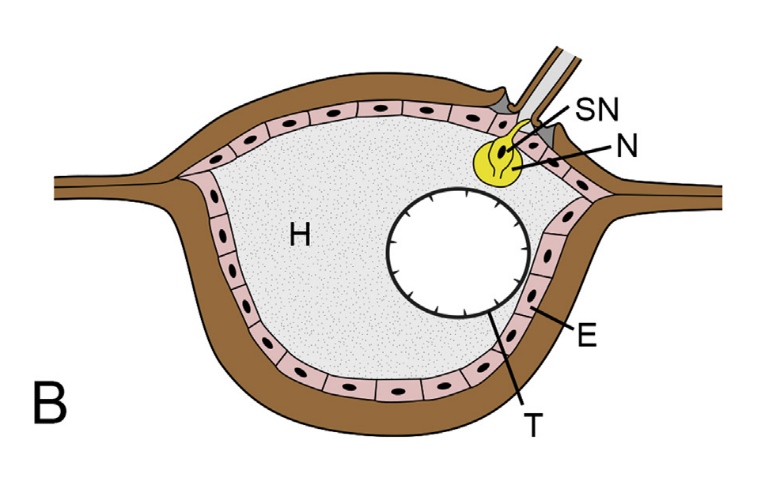
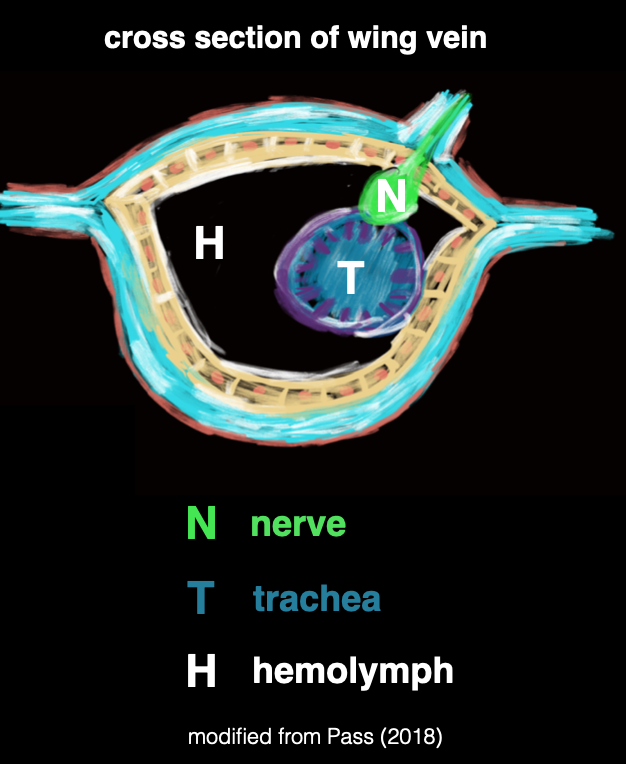

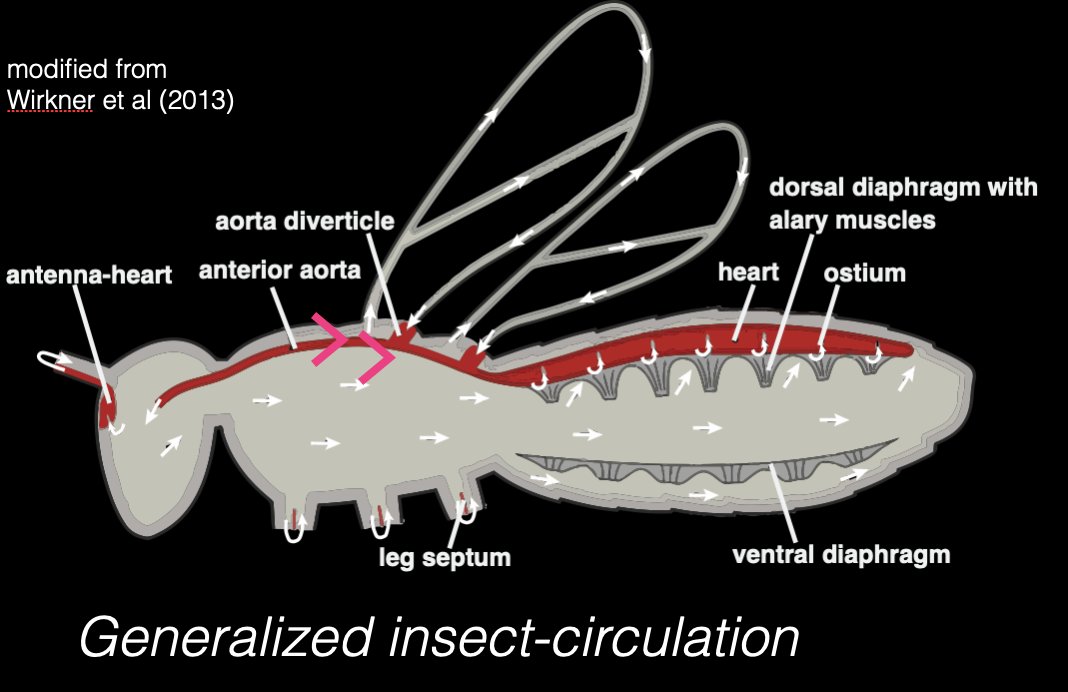 !1 long https://abs.twimg.com/emoji/v2/... draggable="false" alt="💜" title="Violettes Herz" aria-label="Emoji: Violettes Herz"> = dorsal vesselAccessory https://abs.twimg.com/emoji/v2/... draggable="false" alt="💕" title="Zwei Herzen" aria-label="Emoji: Zwei Herzen"> = extra pumps to push/pull blood into antennae, wings, legs, ovipositors /4" title="In contrast, an insect circulatory system is OPEN. No network of vessels, just blood, sloshing around - being pushed around by multiple hearts. YES. More than 1 https://abs.twimg.com/emoji/v2/... draggable="false" alt="💜" title="Violettes Herz" aria-label="Emoji: Violettes Herz">!1 long https://abs.twimg.com/emoji/v2/... draggable="false" alt="💜" title="Violettes Herz" aria-label="Emoji: Violettes Herz"> = dorsal vesselAccessory https://abs.twimg.com/emoji/v2/... draggable="false" alt="💕" title="Zwei Herzen" aria-label="Emoji: Zwei Herzen"> = extra pumps to push/pull blood into antennae, wings, legs, ovipositors /4" class="img-responsive" style="max-width:100%;"/>
!1 long https://abs.twimg.com/emoji/v2/... draggable="false" alt="💜" title="Violettes Herz" aria-label="Emoji: Violettes Herz"> = dorsal vesselAccessory https://abs.twimg.com/emoji/v2/... draggable="false" alt="💕" title="Zwei Herzen" aria-label="Emoji: Zwei Herzen"> = extra pumps to push/pull blood into antennae, wings, legs, ovipositors /4" title="In contrast, an insect circulatory system is OPEN. No network of vessels, just blood, sloshing around - being pushed around by multiple hearts. YES. More than 1 https://abs.twimg.com/emoji/v2/... draggable="false" alt="💜" title="Violettes Herz" aria-label="Emoji: Violettes Herz">!1 long https://abs.twimg.com/emoji/v2/... draggable="false" alt="💜" title="Violettes Herz" aria-label="Emoji: Violettes Herz"> = dorsal vesselAccessory https://abs.twimg.com/emoji/v2/... draggable="false" alt="💕" title="Zwei Herzen" aria-label="Emoji: Zwei Herzen"> = extra pumps to push/pull blood into antennae, wings, legs, ovipositors /4" class="img-responsive" style="max-width:100%;"/>

